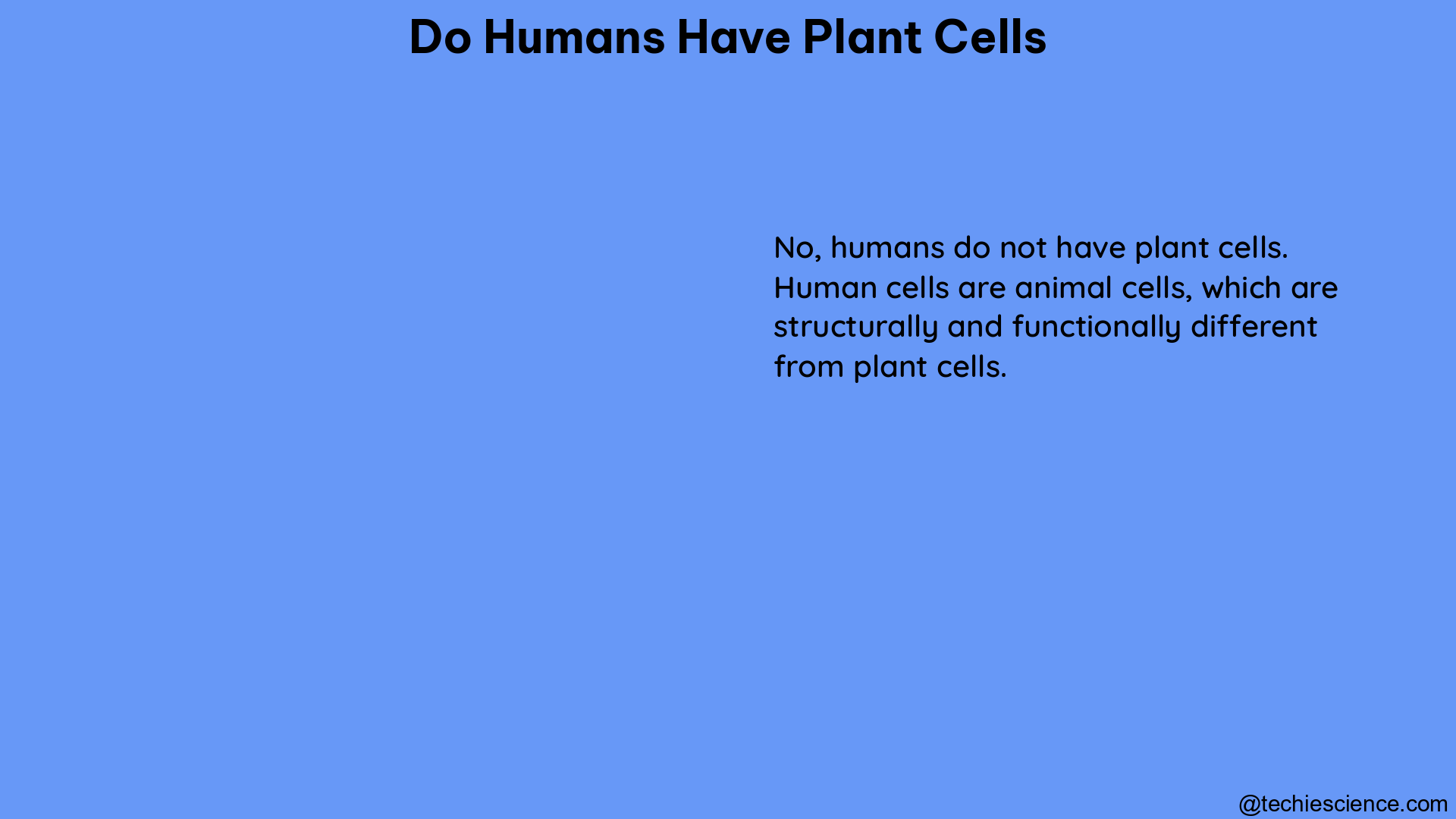Humans do not possess plant cells, but they do contain chloroplasts within some of their cells due to endosymbiotic events that occurred in the distant past. Chloroplasts are the organelles responsible for photosynthesis in plant cells, a process that converts light energy into chemical energy. These organelles have their own circular DNA, resembling that of cyanobacteria, although most of the chloroplast proteins are now encoded by the nuclear genome and synthesized in the cytoplasm.
The Structure and Function of Chloroplasts
Chloroplasts are surrounded by two membranes, with the outer one being permeable to small organic molecules and the inner one being less permeable and studded with transport proteins. The innermost matrix of chloroplasts, called the stroma, contains metabolic enzymes and multiple copies of the chloroplast genome.
Chloroplasts also have a third internal membrane called the thylakoid membrane, which is extensively folded and appears as stacks of flattened disks in electron micrographs. The thylakoids contain the light-harvesting complex, including pigments such as chlorophyll, as well as the electron transport chains used in photosynthesis.
The Light-Harvesting Complex
The light-harvesting complex in the thylakoid membrane is responsible for capturing light energy and initiating the light-dependent reactions of photosynthesis. This complex contains a variety of pigment molecules, including chlorophyll a, chlorophyll b, carotenoids, and xanthophylls. These pigments absorb specific wavelengths of light, with chlorophyll a absorbing primarily blue and red light, while chlorophyll b and carotenoids absorb more of the green and yellow wavelengths.
The arrangement of these pigments within the light-harvesting complex is highly organized, with the chlorophyll molecules positioned to efficiently transfer the absorbed light energy to the reaction centers of the photosynthetic electron transport chain. This efficient energy transfer is crucial for the overall efficiency of the photosynthetic process.
The Photosynthetic Electron Transport Chain
The thylakoid membrane also houses the components of the photosynthetic electron transport chain, which is responsible for the light-dependent reactions of photosynthesis. This chain includes a series of electron carriers, such as the photosystems (PSI and PSII), the cytochrome b6f complex, and the ATP synthase enzyme.
The light energy absorbed by the light-harvesting complex is used to power the movement of electrons through this transport chain, ultimately leading to the production of ATP and the reduction of NADP+ to NADPH. These energy-rich molecules are then used in the light-independent reactions of photosynthesis, where carbon dioxide is converted into organic compounds, such as glucose.
Specialized Properties of Plant Cells

Plant cells possess several specialized properties that distinguish them from animal cells, including the presence of a cell wall and large, fluid-filled vacuoles.
The Cell Wall
The cell wall of plant cells is primarily composed of cellulose, which is the most abundant macromolecule on Earth. Cellulose fibers are long, linear polymers of hundreds of glucose molecules that aggregate into bundles of about 40, forming structures called microfibrils. These microfibrils are embedded in a hydrated network of other polysaccharides, such as hemicellulose and pectin.
The cell wall serves several important functions in plant cells, including:
- Structural Support: The cell wall provides structural support and rigidity to plant cells, allowing them to maintain their shape and resist external forces.
- Protection: The cell wall acts as a protective barrier, shielding the cell from environmental stresses and pathogens.
- Facilitation of Cell-to-Cell Communication: The cell wall contains pores and channels that allow for the exchange of materials and signals between neighboring cells.
- Regulation of Cell Growth and Expansion: The cell wall can expand and contract, allowing for controlled cell growth and expansion.
Vacuoles
Plant cells also possess large, fluid-filled vesicles called vacuoles within their cytoplasm. Vacuoles typically compose about 30 percent of a cell’s volume, but they can fill as much as 90 percent of the intracellular space.
Vacuoles serve several important functions in plant cells, including:
- Storage: Vacuoles are used to store a variety of substances, such as water, nutrients, waste products, and pigments.
- Osmoregulation: Vacuoles play a crucial role in regulating the cell’s water balance and turgor pressure, which is essential for maintaining the structural integrity of plant cells.
- pH Regulation: Vacuoles can maintain a specific pH environment, which is important for various cellular processes.
- Compartmentalization: Vacuoles help to compartmentalize and isolate certain cellular activities, such as the storage of toxic compounds or the digestion of materials.
Conclusion
In summary, while humans do not possess plant cells, they do contain chloroplasts within some of their cells due to endosymbiotic events in the distant past. These chloroplasts are responsible for the light-dependent reactions of photosynthesis, converting light energy into chemical energy. Plant cells, on the other hand, possess several specialized properties, including a cell wall made primarily of cellulose and large, fluid-filled vacuoles that serve a variety of important functions.
References:
– Plant Cells, Chloroplasts, and Cell Walls
– Trimester 1 Exam Flash Cards
– The Structure and Function of Chloroplasts

I am Abdullah Arsalan , Completed my PhD in Biotechnology. I have 7 years of research experience. I have published 6 papers so far in the journals of international repute with an average impact factor of 4.5 and few more are in consideration. I have presented research papers in various national and international conferences. My subject area of interest is biotechnology and biochemistry with special emphasis on Protein chemistry, enzymology, immunology, biophysical techniques and molecular biology.